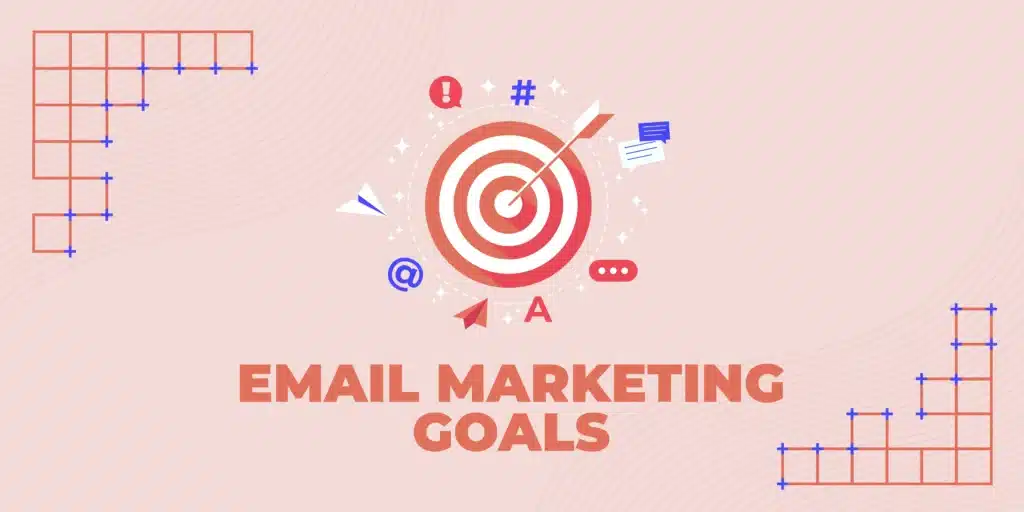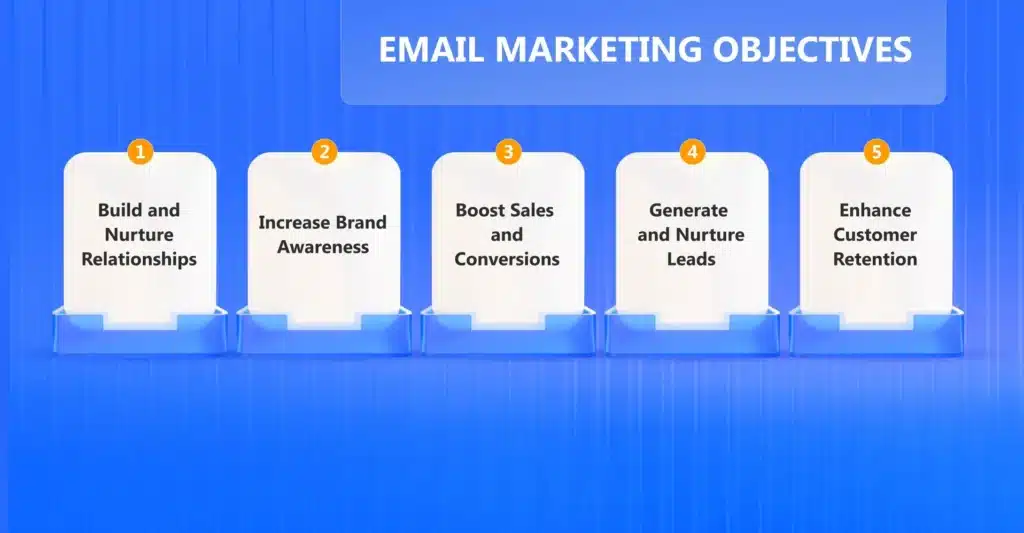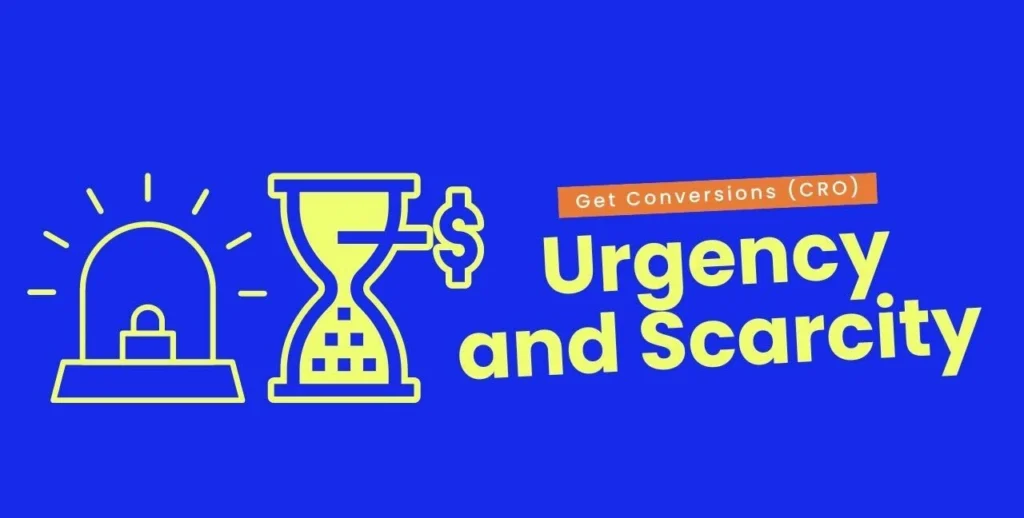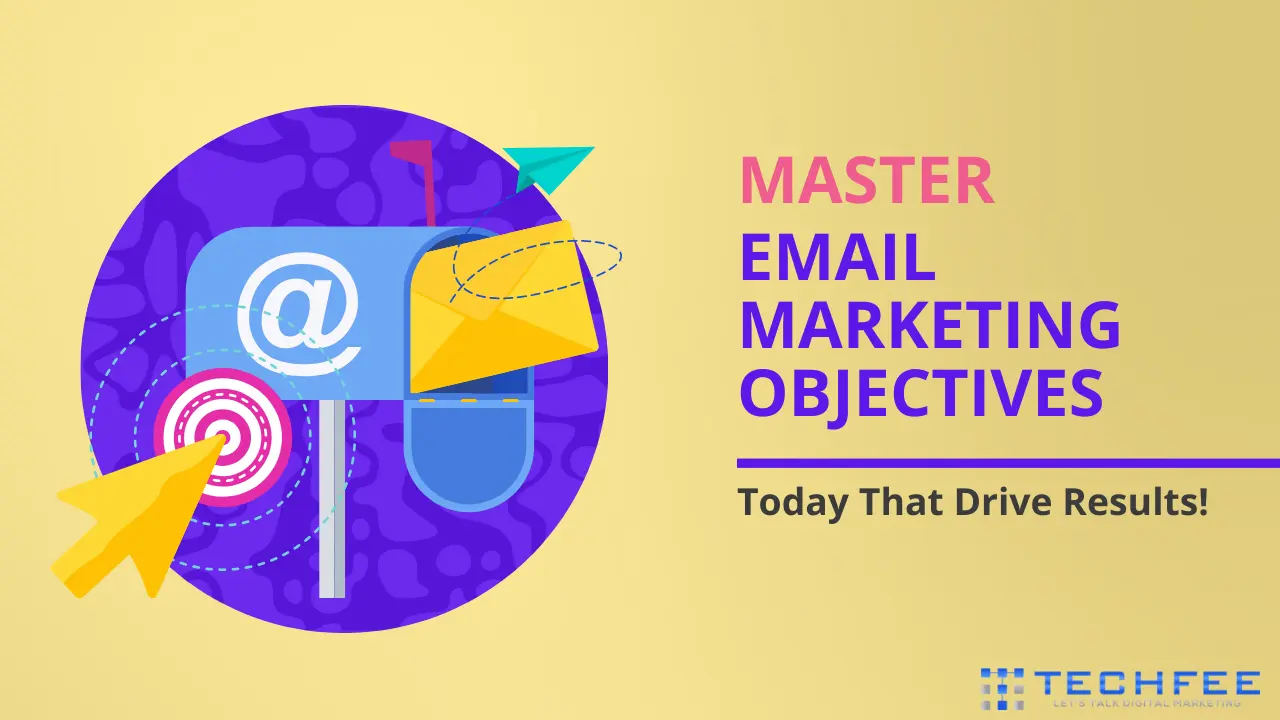Understanding key email marketing objectives is essential for driving success in the ever-evolving digital marketing landscape.
Email is still a powerful tool. It keeps showing that it can engage people and get results.
Email marketing is becoming even more critical as we moved into 2024.
But why is email marketing so good, and why should you make sure your efforts have clear goals?
Any business that wants to reach its full potential needs to know what the main goals of email marketing are.
Each goal is essential for making a strategy work, from spreading the word about your business to getting people to buy something.
According to Hubspot, 31% of marketers use email marketing. Email marketing revenue is estimated to cross almost 11 billion after 2023.
In this blog post, we’ll talk about the eight most crucial email marketing goals you can’t miss in 2024.
These tips will not only help you improve how you do things but also ensure that your emails stand out in a crowded inbox.
Get ready to learn how to use email marketing to its fullest potential and find ideas to change how you run your business.
Why Is Email Marketing A Great Option?
Email marketing is an excellent choice for businesses because it allows them to reach and interact directly with a large audience.
Emails go to the recipient’s inbox, so your message will be seen. This is different from social media sites, where algorithms decide who can see your posts.
Email marketing has a high return on investment (ROI) and lets you communicate with customers more personally, which builds better customer relationships and brand loyalty.
It also has powerful analytics that lets you track performance and make data-based choices.
This method is essential for businesses in 2024 that want to increase conversions, keep customers, and nurture leads without spending a lot of money.
Why Should You Set Email Marketing Goals?

Setting goals for your email marketing is important to make sure that your campaigns are successful and that all of your work helps you reach your general business goals.
Setting clear goals gives you a way to track your progress and improve your methods so that you do better.
They let you customize content, divide your audience into useful groups, and run campaigns that really connect with your followers.
Also, clear goals make it possible to track and analyze things accurately, showing what works and what needs to be changed.
Through setting clear, measurable,
With SMART (specific, measurable, achievable, relevant, and time-bound) goals, you can get the most out of your email marketing, get people to engage with your content in a meaningful way, and see actual results.
Key Email Marketing Objectives

1. Increasing Brand Awareness
Why Brand Awareness Matters
A good marketing plan starts with making people aware of the brand.
It helps people remember your name, which makes it easier for them to find and choose your business when they need to buy something.
Trust and credibility are important for getting and keeping customers in a competitive market.
A well-known name helps with both.
Building a Recognizable Brand
To make a brand that people can recognize, you need to show your business in the same way across all marketing channels.
This means using a consistent brand voice and a visual character that works together, like logos, colors, and fonts.
Being consistent helps build the image of your brand and makes it easy for people to recognize your messages.
Long-term Benefits of Brand Awareness
Being aware of a business has big long-term benefits.
Customers are loyal to brands that have been around for a while, which can lead to return business and word-of-mouth recommendations.
Strong brand knowledge can also give you an edge over your competitors and help you stand out in a crowded market.
In the long run, a well-known business can charge higher prices and keep growing.
Consistent Branding Elements
To raise recognition of your brand through email marketing, make sure that every email has the same branding elements.
Make sure that all of your marketing products have the same look by using the same brand colors, logo, and fonts.
This consistency helps people quickly recognize your emails and strengthens your brand’s identity.
Storytelling and Brand Narratives
Telling stories is a great way to get to know your audience better. Talk about your brand’s values, purpose, and vision through stories.
By giving your brand a personality, these stories can make it more believable and easy to remember.
You can show your brand’s personality and connect with your customers on an emotional level through interesting stories.
Leveraging Social Proof and Testimonials
Social proof, like reviews and comments from past customers, is a great way to get more people to know about your brand.
To build trust and trustworthiness, include positive feedback from happy customers in your emails.
Showing real experiences and recommendations helps people believe what your brand says and gets them interested in your business.
Using user-generated content can also help people connect with and trust your brand.
2. Driving Website Traffic
Connecting Email Campaigns to Website Traffic
Getting people to visit your website is one of the main goals of email marketing.
You can get people to check out your content, goods, or services by linking your email campaigns to your website in a smart way.
This not only gets more people to visit the site but also gets them more involved and could lead to a sale.
The Role of CTAs in Emails
Calls to action (CTAs) are very important for getting people to visit your website from email marketing.
People who see a well-written CTA are told to do certain things, like going to your website, reading a blog post, or buying a sale.
Clear, compelling calls to action (CTAs) that fit with the text of your email are more likely to get people to click through to your site.
Integrating Email with Web Analytics
When you connect your email marketing platform to web tracking tools like Google tracking, you can see how your campaigns are bringing people to your site.
This link lets you keep track of how users behave from email to website, find out how engaged they are, and see which parts of emails get people to visit your site the most.
With this information, you can make sure that your next ads work even better.
Teaser Content and Sneak Peeks
Using teaser material and sneak peeks is a good way to get people to visit your website.
By giving people a sneak peek at something interesting that’s coming up, like a new blog post, a product launch, or exclusive news, you build interest and excitement.
This approach gets people to click through to your website to get the full experience, which brings more people to your site and gets them more involved.
Exclusive Offers and Limited-Time Promotions
Special deals and offers that are only available for a short time are great ways to get people to visit your website.
You can get people to visit your site and take advantage of the offer by giving email users special discounts, early access to sales, or deals that are only available through email.
In your emails, stressing how limited and important these deals are can greatly increase the number of people who click through and visit your site.
3. Generating Leads
The Significance of Lead Generation
Lead generation is an important part of email marketing because it helps companies find and buy from potential customers.
By getting prospects interested and moving them through the sales process, you can build a strong pipeline of qualified leads.
This process is necessary for a business to keep growing and be successful in the long run.
Understanding Your Target Audience
Knowing who you’re trying to reach is essential to produce leads effectively.
Part of this is finding out what they want, need, and are having trouble with.
By dividing your email list into groups based on these factors, you can create more relevant content for each group, which increases the chances of interest and lead conversion.
Qualifying Leads Through Email
To qualify leads through email, you have to see how ready they are to buy.
One way to do this is to keep track of engagement measures like email opens, clicks, and responses to certain calls to action (CTAs).
By looking at this data, you can figure out which leads are most likely to turn into customers and give them more attention when you follow up with them.
Lead Magnets and Freebies
Giving away free stuff and lead buttons are both good ways to get leads.
Prospects are more likely to give you their contact information if you offer them something of value in return, like an eBook, white paper, template, or free trial.
These lead magnets should solve problems for your audience and give them useful information, making your brand a reliable source.
Gated Content and Sign-up Incentives
Content that is locked behind a gate and rewards to sign up are great ways to get leads.
You can get people to sign up for your email list by putting valuable content behind a sign-up form.
Offering rewards like discounts, special access, or chances to win contests is another way to get people to sign up.
These strategies not only help you get more people to sign up for your email list, they also help you find prospects who are interested in what you have to offer.
4. Nurturing Leads
Lead Nurturing Explained
Lead nurturing is the process of getting to know possible customers at all stages of the sales funnel and getting to know them as people.
The goal is to help prospects make a purchase decision by giving them useful knowledge and support.
Lead nurturing that works well helps keep leads interested, builds trust, and eventually turns leads into loyal buyers.
The Customer Journey and Email Marketing
Email marketing is an important part of the customer journey because it lets you send leads tailored content that answers their questions and meets their needs at different stages.
From being aware to thinking about it to making up their minds, emails that are sent at the right time and are useful can move prospects closer to buying.
It’s easier to nurture leads effectively when you know where they are in the customer journey.
Segmenting Your Email List for Better Nurturing
For successful lead nurturing, you need to divide your email list into groups.
By dividing your list into smaller groups based on things like behavior, demographics, and level of interest, you can make sure that each group gets the message that they need.
This personalized method makes your emails more useful and raises the chances of turning leads into customers.
Automated Drip Campaigns
One important part of nurturing leads is using automated drip marketing.
This planned email set aims to slowly give information, answer concerns, and build trust over time.
Drip campaigns keep in touch with leads on a regular basis without needing constant manual work.
This makes it easier to nurture more than one prospect at the same time.
Personalized and Relevant Content
Personalization is a key part of developing leads well. You can write emails that really connect with each lead by using information like past interactions, tastes, and behavior.
Personalized content, like product suggestions, custom deals, and useful resources, makes your message more interesting and powerful.
Making sure that each email is related to the interests and needs of the receiver improves the nurturing process and brings leads closer to becoming customers.
5. Increasing Customer Engagement
Understanding Customer Engagement
When people interact and connect with your business, that’s called customer engagement.
Customers who are interested in your brand are more likely to stick with it, buy from you again, and tell others about it.
To understand how to connect your customers, you need to know how they respond to your emails and use that information to make their experience better.
Metrics to Measure Engagement
It’s important to keep an eye on certain measures, like open rates, click-through rates, and conversion rates, to see how engaged your customers are.
With these measures, you can see how well your emails are connecting with your readers.
Also, keeping an eye on metrics like unsubscribe and bounce rates can help you find ways to improve your content and make sure it stays current and interesting.
The Role of Interactive Content
Interactive material is a big part of getting customers more involved.
Things like polls, quizzes, and images that can be clicked on motivate people to take part instead of just reading or listening.
Interactive emails not only get people’s attention, but they also make the experience more personal and fun, which makes it more likely that people will connect and interact with the email.
Surveys and Feedback Forms
Adding polls and feedback forms to your emails is a good way to get people to interact with them more.
Customers can share their thoughts, preferences, and experiences with these tools, which makes them feel important and heard.
Getting feedback from customers can also help you figure out what they want and where you can improve, so you can make your products and services better fit their needs.
Gamification Elements in Emails
Adding game-like features to your emails is called gamification, and it makes them more fun and interesting.
Customers will be more likely to connect with your content if you use techniques like challenges, rewards, and leaderboards.
You could, for instance, give people points for doing certain things or badges for responding to a lot of emails.
Gamification not only makes the user experience better, but it also gets them to interact with your brand again and again, which builds a stronger relationship with it.
6. Driving Conversions
From Engagement to Conversion
The ultimate goal of any email marketing strategy is to drive conversions, which means turning interested subscribers into paying customers.
To move from engagement to conversion, you need to keep in touch with people and build trust through regular, useful conversations.
You can reach your business goals and greatly boost your conversion rates by making your emails more likely to lead to specific actions.
Conversion Rate Optimization
Conversion rate optimization, or CRO, is the process of making your email marketing better so that as many people as possible do what you want them to do, like buy something or sign up for a service.
This means examining your emails’ performance, identifying obstacles to conversion, and making changes to improve the user experience.
Increasing conversion rates can be done by making things easier, like making the checkout process easier, improving the look of emails, and making sure they work on mobile devices.
A/B Testing for Better Results
A/B testing is one of the most important ways to improve results.
By testing different versions of your emails, you can find out which parts of them your audience responds to best.
This includes subject lines, calls to action (CTAs), images, and text layouts.
By using A/B testing to learn more about your subscribers’ likes and dislikes and how they act, you can improve your strategies for maximum effect and higher conversion rates.
Crafting Compelling Offers
One of the best ways to get people to convert is to make deals that are appealing and relevant to their needs.
The value of these offers should be clear, like discounts, free trials, or special material.
By emphasizing the benefits and using convincing language, you can make your offers impossible to refuse, which will motivate people to act.
Creating Urgency and Scarcity

Adding a sense of haste and scarcity can greatly increase the number of people who buy something.
You can get people to act quickly to avoid losing out by focusing on limited-time offers, low-stock alerts, or special deals.
Phrases like “exclusive offer,” “limited time only,” and “limited time only” can make people feel rushed and want to act right away, which increases the chance of a conversion.
7. Retaining Customers
The Value of Customer Retention
Customer retention is important for long-term business growth because it means keeping current customers interested and loyal.
Keeping customers is often cheaper than getting new ones because loyal customers spend more and don’t need as much marketing.
Businesses can make more money and keep customers longer by building ties with them and giving them great experiences.
Cost-effectiveness of Retention vs. Acquisition
Studies have shown over and over that keeping people is cheaper than getting new ones.
Customers who have already bought from you know your name and are willing to buy from you again.
Businesses can keep customers longer and make more money from the ones they already have by investing in retention tactics like personalized communication and customer service.
Building Loyalty through Email

Email marketing is a key part of keeping customers loyal because it lets you stay in touch and send them useful information.
Businesses can show customers they appreciate them, let them know about new goods or services, and give them special deals through personalized emails.
Email engagement that happens on a regular basis helps build relationships and shows that your brand cares about customer happiness.
Loyalty Programs and Rewards
Reward programs and loyalty programs are good ways to keep people coming back.
Businesses can build long-term trust and repeat purchases by giving rewards like points for purchases, discounts on future orders, or VIP status.
Loyalty programs make customers feel special and appreciated, which makes them more likely to choose your brand over others.
Exclusive Content and Early Access
Giving customers access to special content and new goods or services before anyone else can can also help you keep them as customers.
People who feel valuable and informed through sneak peeks or insider information are more likely to stay loyal subscribers.
This approach not only builds stronger relationships with customers, but it also gets people excited and looking forward to what’s to come.
8. Gathering Customer Feedback
Importance of Customer Feedback
Businesses that want to improve their products, services, and the general customer experience can learn a lot from customer feedback.
It gives you actionable feedback straight from the people who are using your products or services, showing you where they could be better and finding new ways to do things.
Businesses can stay ahead of the competition in the market and meet customer needs by constantly asking for and listening to feedback.
Improving Products and Services
Customer feedback drives us to keep improving. By examining email feedback, companies can determine what parts of their product or service customers like best and what parts need improvement.
This iterative process makes sure that products and services closely match what customers want, which over time makes them happier and more loyal.
Enhancing Customer Experience
A good experience for the customer is very important for keeping them and getting them to promote your brand.
When businesses get feedback through email, they can find trouble spots in the customer journey and fix them to make the whole experience better.
Businesses can build a reputation for great customer service and long-lasting relationships with their audience by responding quickly and effectively to complaints.
Surveys and Polls
When you want to get structured feedback from people via email, surveys and polls work well.
With these methods, companies can ask specific questions about the features of a product, the quality of a service, or the level of general satisfaction.
Businesses can get useful quantitative data about their customers’ likes and dislikes by making polls that are short and specific.
Net Promoter Score (NPS) Surveys
One question, “How likely are you to recommend our product/service to a friend or colleague?” is all that Net Promoter Score (NPS) surveys ask to find out how loyal and happy customers are.
Customers rate how likely they are to buy something on a scale, which gives a number value to customer happiness and loyalty.
Businesses can see how customers feel about them over time and find trends that affect business growth by emailing NPS surveys.
Conclusion: Email Marketing Objectives
In conclusion, any business that wants to do well in the digital world needs to understand these eight crucial email marketing objectives for 2024.
Enhancing brand recognition and increasing website traffic are just a few of the goals that email marketers try to reach.
Other important goals include generating leads, keeping customers, converting them, and getting helpful feedback.
By setting and pursuing these goals in a planned way, businesses can build stronger relationships with their audience, increase customer loyalty, and eventually grow and make more money.
In the coming years, email marketing will likely focus on more personalized messages, automation powered by AI, and bettering the customer experience through engaging and dynamic content.
Businesses that follow these trends will be able to stay competitive and send email campaigns that really connect with people in a deep and important way.
Adapting to these goals and trends will be important for long-term success in the fast-paced digital market of 2024 and beyond as email marketing continues to change.
If you found this post informative, please leave a comment below saying, “I found this post informative.”
Additionally, we encourage you to share this post with others to help educate more people.
Also, don’t forget to subscribe to our email newsletter to receive more informative content like this directly in your inbox.
FAQs: Email Marketing Objectives
What are the most important email marketing objectives in 2024?
Increasing brand awareness, driving website traffic, generating leads, nurturing customer engagement, driving conversions, retaining customers, and gathering customer feedback are crucial email marketing objectives for 2024.
How can I measure the success of my email marketing campaigns?
Success can be measured through key metrics like open rates, click-through rates, conversion rates, bounce rates, and ROI (Return on Investment). Tracking these metrics helps gauge campaign effectiveness and identify areas for improvement.
What are some common mistakes to avoid in email marketing?
Common mistakes include not segmenting your audience, sending irrelevant content, neglecting mobile optimization, not testing email campaigns, and ignoring unsubscribe requests. Avoiding these pitfalls helps maintain subscriber engagement and campaign performance.
How often should I send emails to my subscribers?
The frequency depends on your audience and content relevance. Typically, a balance between staying top-of-mind and avoiding over-saturation works best. Test different frequencies to find what resonates with your subscribers.
What tools can help me achieve these email marketing objectives?
Tools like Mailchimp, HubSpot, ConvertKit, and ActiveCampaign can assist with email automation, segmentation, analytics, A/B testing, and personalized content creation, facilitating effective campaign management.
Does my company need an email marketing campaign to grow?
Yes, email marketing is essential for nurturing leads, maintaining customer relationships, and driving sales. It offers a direct communication channel with measurable results, crucial for sustainable business growth.
What are the objectives of email marketing?
The primary objectives include building brand awareness, driving traffic to websites, generating leads, nurturing leads into customers, engaging and retaining customers, and gathering feedback to improve products and services.
How to set email marketing goals?
Set SMART goals (Specific, Measurable, Achievable, Relevant, Time-bound) aligned with broader business objectives. Define metrics for success, such as increasing subscriber engagement or boosting conversion rates, and track progress regularly to optimize campaigns.










